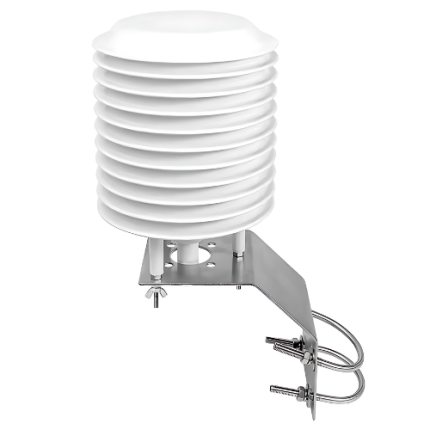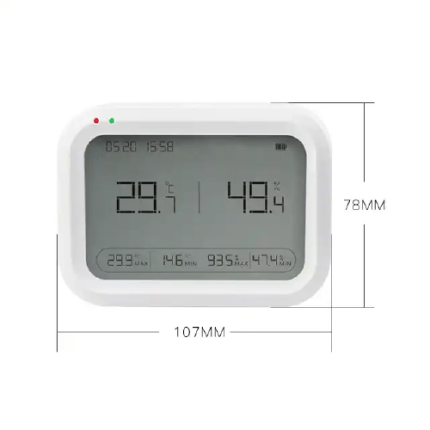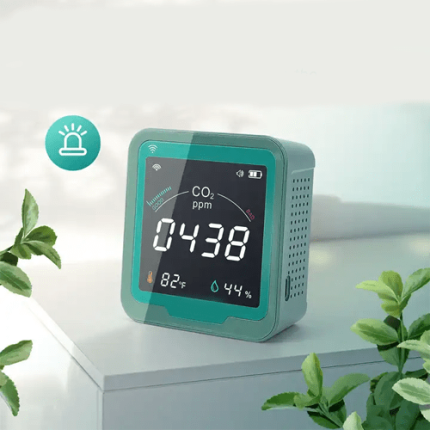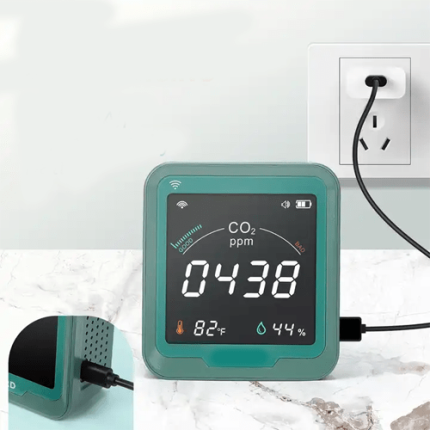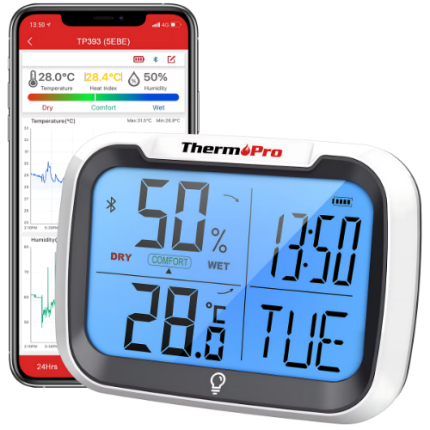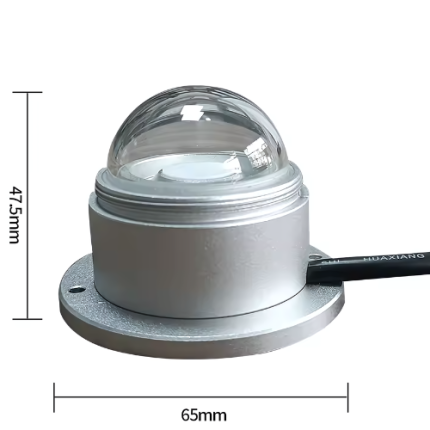GAO’s Environmental sensors are advanced devices used to monitor and measure various environmental parameters, such as temperature, humidity, air quality, and pollutant levels. These sensors collect real-time data, which is crucial for applications in areas like environmental monitoring, industrial processes, and smart city infrastructure. GAO Tek’s environmental sensors are designed for high accuracy and durability, providing reliable insights into environmental conditions. They support functionalities such as data logging, trend analysis, and remote monitoring, enabling proactive management and response to environmental changes. These sensors play a key role in ensuring compliance with environmental regulations, optimizing resource use, and improving overall sustainability efforts across various sectors.
The Environmental sensor may also be called: Environmental Monitoring Device, Environmental Detection Sensor, Atmospheric Sensor, Environmental Measurement Instrument, Environmental Detection Instrument, Environmental Condition Sensor, Environmental Data Sensor, Environmental Sensing Device, Environmental Monitor, and Environmental Parameter Sensor.
Air Temperature Humidity Sensor with Solar Radiation Shield – GAOTek
GPS/GSM Wireless Tracker: ARM7 Processor, 4MB Memory, SMS/GPRS, 7-55V DC – GAOTek
Handheld ZigBee Weather Station, USB/Bluetooth, IP65, 24h Battery – GAOTek
Industrial Electrochemical SO2 Environmental Sensor – GAOTek
LCD CO2 Compact Monitor with Backlight 400-5000ppm Battery-Powered – GAOTek
Online Industrial Water Conductivity Sensor – GAOTek
Smart Wireless Digital Room Humidity and Temperature Sensor – GAOTek
Solar Radiation Sensor for the Sun – GAOTek
GAO’s Environmental sensors are composed of following components:
- Sensing Element
- Transducer
- Signal Conditioning Circuit
- Microcontroller or Processor
- Power Supply
- Communication Interface
- Enclosure
- Calibration Mechanism
- Filters and Screens
- Heaters
- Memory Storage
GAO Tek’s Environmental sensors have the following functions:
- Monitoring Environmental Parameters: The core function of environmental sensors is to continuously monitor specific environmental parameters such as temperature, humidity, pressure, air quality, and light levels. These sensors provide real-time data, enabling immediate responses to changing conditions.
- Data Collection and Logging: Environmental sensors collect and log data over time, which can be used for trend analysis, historical comparisons, and predictive modeling. This function is critical in research, environmental management, and industrial processes where long-term data is essential for understanding patterns and making informed decisions.
- Environmental Control: By providing accurate data on environmental conditions, sensors facilitate automated control systems. For example, HVAC systems use temperature and humidity sensors to maintain optimal indoor climates, while agricultural systems use soil moisture sensors to automate irrigation.
- Health and Safety Assurance: Environmental sensors play a vital role in ensuring health and safety. Air quality sensors detect harmful gases and particulates, triggering alerts and ventilation systems to maintain safe air quality levels. In industrial settings, sensors monitor for hazardous conditions such as gas leaks or excessive noise levels.
- Regulatory Compliance: Many industries are subject to environmental regulations that require continuous monitoring and reporting of specific parameters. Environmental sensors help organizations comply with these regulations by providing the necessary data for documentation and reporting to regulatory bodies.
- Predictive Maintenance: In industrial and manufacturing environments, sensors monitor equipment conditions such as temperature, vibration, and pressure. This data helps predict potential failures before they occur, enabling proactive maintenance and reducing downtime.
- Environmental Impact Assessment: Environmental sensors are used to assess the impact of human activities on natural ecosystems. For example, sensors monitor water quality in rivers and lakes, air quality in urban areas, and soil conditions in agricultural fields. This information is crucial for developing strategies to mitigate negative environmental impacts.
- Climate Monitoring and Research: In climate science, sensors collect data on various atmospheric parameters, contributing to the understanding of climate patterns and changes. This data supports research and the development of models to predict future climate scenarios and guide policy decisions.
- Disaster Prevention and Management: Environmental sensors can provide early warnings for natural disasters such as floods, wildfires, and hurricanes. By monitoring environmental conditions in real-time, sensors help authorities take preventive measures and manage emergency responses more effectively.
- Energy Efficiency: Sensors contribute to energy efficiency by optimizing the operation of systems such as lighting, heating, and cooling based on real-time environmental data. For instance, light sensors adjust artificial lighting based on natural light availability, reducing energy consumption.
GAO Tek’s Environmental sensors comply with applicable industry standards such as:
- ISO 14001
- ISO 17025
- IEC 61000
- RoHS (Restriction of Hazardous Substances)
- REACH (Registration, Evaluation, Authorization, and Restriction of Chemicals)
- CE Marking
- UL (Underwriters Laboratories) Certification
- ATEX (Atmospheres Explosible)
- IP (Ingress Protection) Ratings
- NEMA (National Electrical Manufacturers Association) Standards
- ANSI (American National Standards Institute) Standards
- CSA (Canadian Standards Association) Certification
- FCC (Federal Communications Commission) Regulations
- GHS (Globally Harmonized System of Classification and Labelling of Chemicals)
- LEED (Leadership in Energy and Environmental Design) Certification
Our Environmental sensors help our customers comply with relevant U.S. government regulations such as:
- Environmental Protection Agency (EPA) Regulations
- Occupational Safety and Health Administration (OSHA) Standards
- Federal Communications Commission (FCC) Regulations
- National Institute of Standards and Technology (NIST) Guidelines
- Clean Air Act (CAA) Requirements
- Clean Water Act (CWA) Requirements
- Resource Conservation and Recovery Act (RCRA)
- Toxic Substances Control Act (TSCA)
- National Environmental Policy Act (NEPA)
- Hazardous Materials Transportation Act (HMTA)
- Safe Drinking Water Act (SDWA)
- Energy Policy Act
- Endangered Species Act (ESA)
- Comprehensive Environmental Response, Compensation, and Liability Act (CERCLA)
- Emergency Planning and Community Right-to-Know Act (EPCRA)
Our Environmental sensors help our clients in comply with relevant Canadian government regulations such as:
- Canadian Environmental Protection Act (CEPA)
- Fisheries Act
- Canadian Drinking Water Guidelines
- Canadian Council of Ministers of the Environment (CCME) Guidelines
- Occupational Health and Safety (OHS) Regulations
- Transportation of Dangerous Goods (TDG) Regulations
- Environmental Assessment Act
- Species at Risk Act (SARA)
- Hazardous Products Act (HPA)
- Clean Air Regulatory Agenda (CARA)
- Wastewater Systems Effluent Regulations (WSER)
- Provincial Environmental Regulations (e.g., Ontario Environmental Protection Act)
- Federal Sustainable Development Act (FSDA)
- Greenhouse Gas Reporting Program (GHGRP)
- National Pollutant Release Inventory (NPRI)
Our Environmental sensors have the following applications:
- Industrial Automation and Monitoring: Environmental sensors are critical in industrial settings for monitoring conditions such as temperature, humidity, pressure, and gas levels. They ensure that machinery operates within optimal parameters, preventing equipment failure and enhancing operational efficiency. For instance, pressure sensors in oil and gas pipelines detect leaks and ensure safe operation.
- Environmental Conservation and Research: In environmental science, sensors monitor air and water quality, soil conditions, and weather patterns. This data supports conservation efforts, climate research, and the study of ecosystems. For example, sensors in forests track humidity and temperature to study the effects of climate change on biodiversity.
- Agriculture and Precision Farming: Environmental sensors play a pivotal role in modern agriculture by enabling precision farming techniques. Soil moisture sensors, for example, optimize irrigation schedules, reducing water usage and improving crop yields. Sensors that monitor environmental conditions help farmers make informed decisions about planting, fertilizing, and harvesting.
- Smart Cities and Infrastructure: In urban areas, environmental sensors are integrated into smart city initiatives to monitor air quality, noise levels, and energy consumption. This data helps city planners manage traffic, reduce pollution, and improve the overall quality of life for residents. For example, air quality sensors placed around a city provide real-time data that informs pollution control measures.
- Healthcare and Indoor Air Quality: In healthcare facilities, environmental sensors ensure that indoor air quality remains within safe limits, reducing the risk of infections and improving patient outcomes. Sensors that monitor temperature, humidity, and airborne contaminants are crucial in maintaining sterile environments in hospitals and laboratories.
- Building Automation and Energy Management: Environmental sensors are integral to building automation systems, optimizing HVAC (Heating, Ventilation, and Air Conditioning) operations. By monitoring indoor temperature, humidity, and occupancy levels, these sensors help reduce energy consumption and maintain comfort. For instance, smart thermostats use sensor data to adjust heating and cooling based on real-time conditions.
- Disaster Prevention and Management: Environmental sensors provide early warnings for natural disasters such as floods, hurricanes, and wildfires. Flood sensors placed along riverbanks monitor water levels and alert authorities to rising flood risks. In wildfire-prone areas, sensors detect smoke and temperature changes, enabling rapid response to potential fires.
- Transportation and Automotive Industry: In the automotive sector, environmental sensors enhance vehicle safety and performance. For example, temperature and humidity sensors in cars adjust climate control systems for passenger comfort. In public transportation, sensors monitor air quality within buses and trains, ensuring a safe environment for passengers.
- Energy Production and Management: Environmental sensors are used in the energy sector to monitor conditions in power plants and renewable energy installations. For example, sensors in wind turbines measure wind speed and direction, optimizing energy production. In solar farms, sensors track sunlight intensity to adjust panel positioning for maximum efficiency.
- Water and Waste Management: In water treatment plants, sensors monitor water quality parameters such as pH, turbidity, and contaminant levels. This data ensures that water treatment processes are effective and safe for consumption. In waste management, sensors track landfill gas emissions and monitor conditions to prevent environmental contamination.
Below are our resource pages containing useful information on Environmental sensors:
FAQs on Environmental sensor on GAOTek.com
How to Choose an Environmental sensor
Components of Environmental sensors
Operation, Maintenance & Calibration of Environmental sensors
Customers in the U.S and Canada of Environmental sensors
Applications of Environmental sensors in Asset Tracking
Our Environmental sensors are in stock and can be shipped overnight within the continental U.S. and Canada from a nearby warehouse in the U.S. or Canada, and can also be shipped globally.
We provide 24/7 support. If you have any questions, our technical experts can help you. Please fill out this form or email us.

